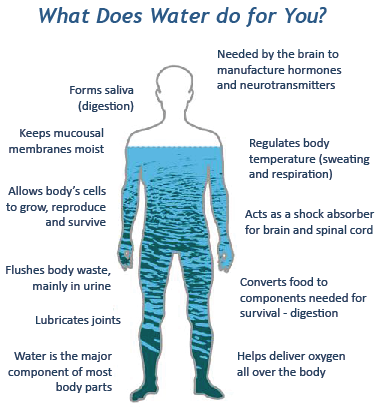Why do we as biochemists study Buffers?
The simple answer is that our blood or plasma and that of other mammals has a constant pH!
Regardless of what we consume during the day or the stress conditions we are exposed to our body is capable of maintaining a constant pH.
The Buffering capacity in our body depends upon equilibrium between:
1) Gaseous
CO2 (air spaces of the lungs)
2) Aqueous
CO2 (dissolved in the blood)
3) Carbonic
acid
4) Bicarbonate
To further understand the behavior of buffers in our body ans their role in maintaining the blood pH and thus the acid base balance let us first review how buffers act.
Maintenance of the Acid Base balance of the body will be posted in our next post.
Acid Dissociation Constants of Weak Acids
 Acids and bases that dissociate completely in
water, such as hydrochloric acid and sodium hydroxide, are called strong acids
and strong base.
Acids and bases that dissociate completely in
water, such as hydrochloric acid and sodium hydroxide, are called strong acids
and strong base.
The chloride ion is the base that corresponds to
HCl after it has given up its proton.
Cl- is called the conjugate
base of HCl.
H3O+ is the conjugate acid of H2O
Weak acids and bases dissociate partially in water. Acetic acid is the weak acid present in vinegar. The equilibrium constant for the dissociation of a proton from an acid in water is called the acid dissociation constant, Ka.
Henderson–Hasselbach equation (H-H)
It defines the pH of a solution in
terms of the pKa of the weak acid form of the acid–base pair and the logarithm
of the ratio of concentrations of the dissociated species (conjugate base) to
the protonated species (weak acid).
Let us derive the equation
 The pH of the solution thus depends upon the ratio of concentrations of the dissociated species (conjugate base) to the protonated species (weak acid) as the Ka value for each acid is constant.
The pH of the solution thus depends upon the ratio of concentrations of the dissociated species (conjugate base) to the protonated species (weak acid) as the Ka value for each acid is constant.
When the concentrations of a weak acid or the proton donor and its conjugate base or the proton acceptor are exactly the same the pH of the solution is equal to
the pKa of the acid.
Titration curve of acetic acid (CH3COOH)
The pKa values of weak acids are determined by titration with a base.
Monoprotic acids like acetic acid have only one ionizable group, one pKa value.
There is an inflection point (a point of minimum slope) at the midpoint of the titration, when 0.5 equivalent of base has been added This is the point at which [CH3COOH]= [CH3COO- ] and pH pKa.
At the endpoint, all the molecules of acetic acid have been titrated to the conjugate base, acetate.
Monoprotic acids like acetic acid have only one ionizable group, one pKa value.
There is an inflection point (a point of minimum slope) at the midpoint of the titration, when 0.5 equivalent of base has been added This is the point at which [CH3COOH]= [CH3COO- ] and pH pKa.
At the endpoint, all the molecules of acetic acid have been titrated to the conjugate base, acetate.
Weak Acids Can act as Buffers
Buffered Solutions Resist Changes in pH
•
If the pH of a solution remains nearly constant
when small amounts of strong acid or strong base are added the solution is said
to be buffered.
•
The ability of a solution to resist changes in
pH is known as its buffer capacity.
•
Most effective buffering, indicated by
the region of minimum slope on the curve, occurs when concentrations of a weak
acid and its conjugate base are when the pH equals the pKa
•
The effective range of buffering is from one pH unit below to one pH unit above
the pKa.
Titration curve for phosphoric acid
Phosphoric acid (H3PO4) is a polyprotic
acid. It contains three different
hydrogen atoms that can dissociate to form H ions and corresponding conjugate
bases with one, two, or
three negative charges. So it has three pKa values.
Why does the
titration curve of a week acid look the way it looks?
Using the H-H equation,
let’s follow the change of pH as we
increase the ratio of [acid]/[base].
pH = pKa +
log [CH3COO-]/[CH3COOH]
The H-H equation to calculate the pH of solutions or find the ratio of weak acid and conjugate base needed to prepare a buffer solution
Here is an example.
Example: 1.00 mole of phosphoric acid (H3PO4) and 1.75 moles of NaOH are added to 1 L of water. Calculate the pH.
Step 1: 1 mol of H3PO4 +
1.75 mol
OH- ----->
1 mol
H2PO4- + 1 mol
H2O +
0.75 mol
OH-
Step 2: 1 mol of H2PO4- + 0.75 mol
OH- ---->
0.25 mol
H2PO4- + 0.75 mol
HPO42- + 0.75 mol
H2O
Step 3: In the end, we have 0.25 moles of H2PO4- and 0.75 moles of HPO42-, we can
calculate the pH using the H-H equation:
Step 4: Look up the pKa
of the reaction:
pKa
for H2PO4-
⇄
HPO42- + H+, is 6.86
Step 5: Calculate [HA] = [H2PO4-]: 0.25 mol/1
L = 0.25 M
Step 6: calculate [A-] = [HPO42-] : 0.75 mol/1
L =
0.75 M
Therefore: pH = pKa+
log[A-]/[HA]
= 6.86 + log((0.75 M)/(0.25 M)) = 7.34
For further information or for few practice exercises visit the following links
https://www.youtube.com/watch?v=jKD06NhAQCI
https://www.youtube.com/watch?v=i1LyWQ_lPik
We will post to you some practice exercises soon





























